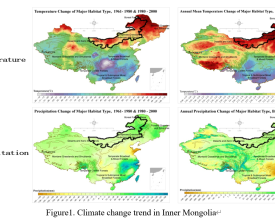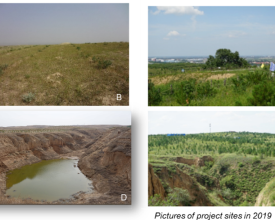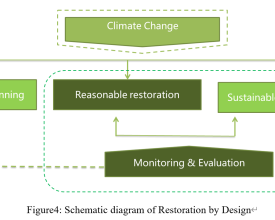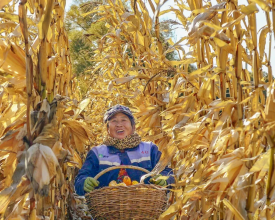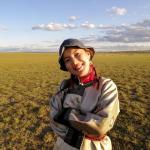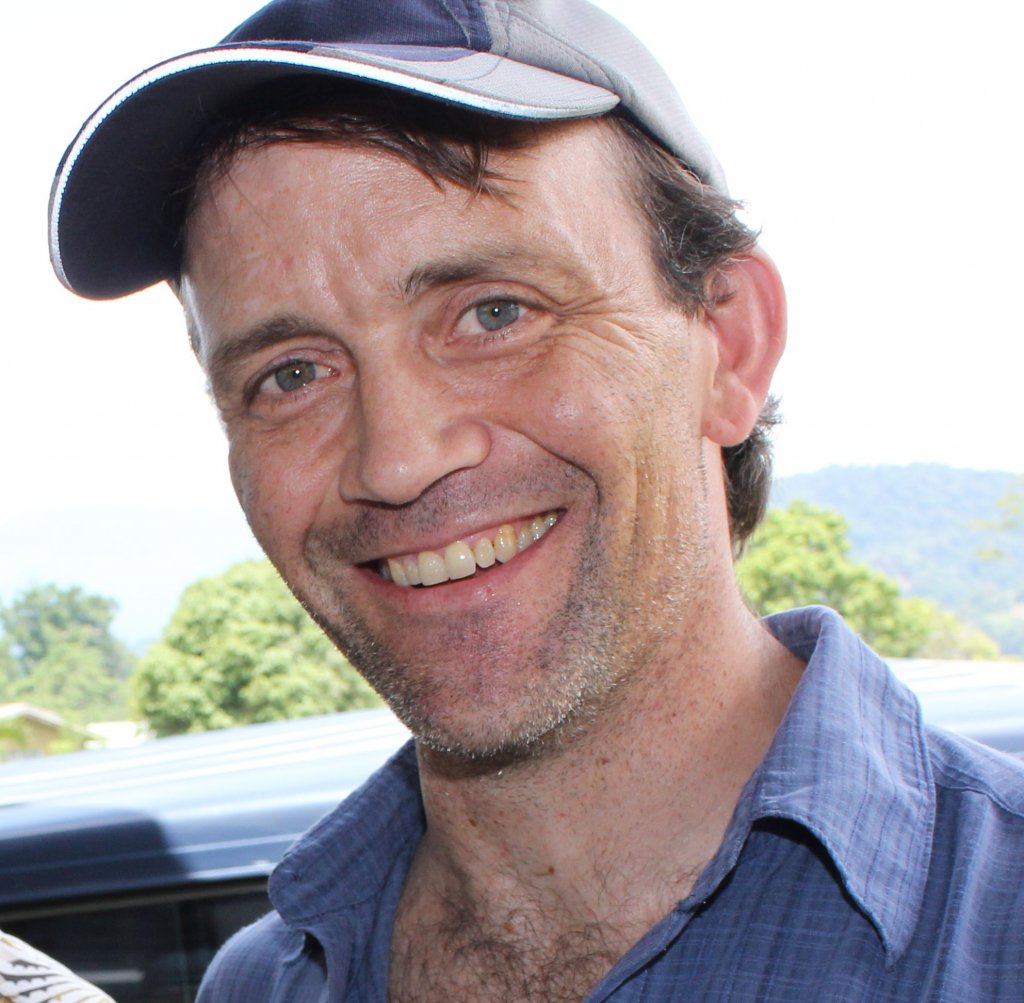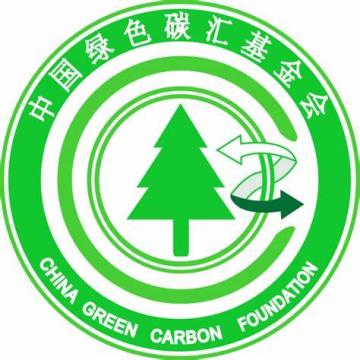
Nature-based Solutions in Inner Mongolia: Restoration by Design
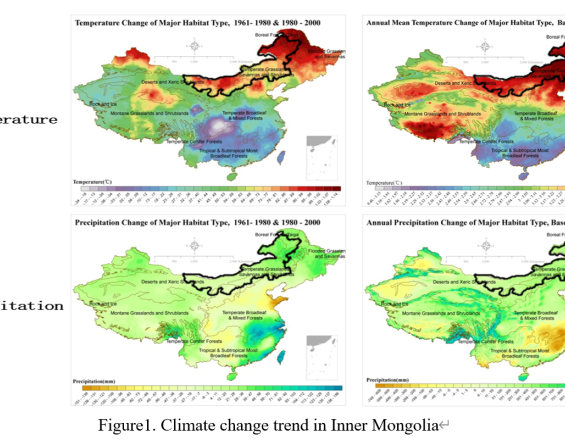
The Nature Conservancy partnered with government agencies and philanthropic partners to restore degraded land in Inner Mongolia, leveraging a Restoration by Design approach to pinpoint Nature-based Solutions (NbS) for maximum impact, build resilience against climate change, and strengthen community livelihoods and wellbeing. This “Restoration by Design” approach was first leveraged in Helinge’er County in 2010, a typical agro-pasture ecotone in central Inner Mongolia. Over 10 years, TNC and partners carried out innovative approaches, such as carbon sink trading, meteorological apps for grassland management, and “dry farming” techniques for sustainable farmland management, all of which have become common practice of the local people in Helinge’er. RbD activities resulted in restored ecosystems, a decrease in sandstorm impacts, and more efficient use of natural resources in farming, among other benefits. TNC is now promoting RbD to the broader areas of Inner Mongolia with three more project sites in the works.
Context
Challenges addressed
Over a long period of time, unsustainable land use (overgrazing, inappropriate land reclamation and cultivation, excessive forest logging and excessive use of water resources) and changing climate have damaged the fragile ecology of Inner Mongolia, resulting in land degradation and the loss of ecosystem service function. Furthermore, climate change is further intensifying the impact of human activities. Both historical data & observation and future simulations have predicted the dry-warming trend in eastern and central Inner Mongolia. The alarming consequences of water shortage and desertification, which will pose an immediate threat to local ecology and production, and people’s livelihood.
Location
Process
Summary of the process
Restoration by Design (RbD) is a conservation approach that allows multidisciplinary teams to a) pinpoint areas of high return for biodiversity, carbon sequestration, and ecological restoration b) apply targeted NbS that will benefit both nature and local communities and c) help areas mitigate and adapt to climate change. Crucially, these building blocks must consider the interests and risks of the local community at every level in order to build trust and help local communities build a climate-resilient future in their homeland. RbD is an approach that can be applied by any conservationist working in partnership with local communities, NGOs, government groups, and civil society organizations.
These five building blocks are interactive and iterative – and we continue to learn from each of these stages and apply findings throughout the lifecycle of the project.
Building Blocks
Scientific Planning (Ecological restoration and conservation planning for adaptation to climate change)
In Helinge’er County, Systematic Conservation Planning (SCP) was used to plan ecological restoration and protection for the county with consideration of climate change forecast. Firstly, demands of regional ecosystem service functions were determined according to the national ecological function zoning and ecological red lines. Secondly, to ensure the key ecosystem types in each ecological function plot can perform long-lasting and reliable ecological service functions, historic and current status of each ecological function plot was evaluated with literature reviews and field investigations (community surveys), and ecosystem trends were predicted under different climate change scenarios. Community outreach was crucial in understanding how the lived experience of farmers and herders compared to the scientific literature and helped build trust with communities.
Targets of the protection area target were set, and the degree of human influence in the area was considered. Finally, for the important ecological function areas the current ecosystem status was compared to the key ecosystem types that can continue to play their roles. If they were consistent, they were identified as protected areas. Inconsistencies resulted in restoration areas, and the target ecosystem type for restoration could then be determined.
Enabling factors
- TNC’s partnership with the Inner Mongolia Forestry and Grassland Bureau helped facilitate field investigations with the community.
- The older population of Helinge’er remembered a time when ecological services were highly functioning and were eager to see ecosystems restored.
- Partnerships with philanthropic supporters, Such as Lao Niu Foundation, made this work possible. RbD and community engagement work takes time, and it helps to have funders who understand and invest in longer time frames
Lesson learned
When TNC first began work in Helinge’er, there was no systematic scientific planning approach for this particular ecosystem, its degradation factors, and community needs. SCP is a broad approach, and our teams had not yet executed this level of planning on in arid and semi-arid ecosystems in Inner Mongolia.
We realized engaging with the local communities and developing collaborative relationships with the local experts weas vital to building a long-term restoration project.
Through extensive field surveys, we were able to combine existing scientific models with local expertise and community knowledge. This hybrid approach helped us adapt to the specific needs of the area and its people.
Ecological Restoration (Nature-based solutions that both restore ecosystems and also sequester carbon, e.g. "trees, shrubs and grass" approach)
In order to restore the degraded land, to increase the vegetation coverage and biodiversity, and to recover the ecosystem functions of windbreak and sand-fixation, the project employs the tertiary structure of "trees, shrubs and grass." Native species of trees, shrubs, and grass were selected for maximum ecological service function, including carbon sequestration and habitat potential. Since 2010, we have restored a priority area of 2,585 hectares of degraded land, as identified by the Helinge’er County Ecological Restoration Plan. Restoration activities included planting nearly 3 million trees that is estimated to capture more than 160,000 tons of CO2 over the next 30 years.
Aiming at gully areas with serious water and soil erosion, the project incorporated engineering and biological approaches, introduced new technologies such as a "biological blanket"(It is a high strength ecological slope protection tool made of a variety of naturally degradable materials. Biological blanket helps reduce soil erosion on the slope) and successfully restored nearly 600 hectare (9,000 mu) of soil and water loss areas in 14 gullies.
Enabling factors
- Buy-in and agreement from all parties – the Inner Mongolia Forestry Bureau, the local community, TNC scientists, and funders – enabled effective collaboration over a decade to implement restoration activities
- Partnerships with the implementing company to make sure the restoration process took in place as planned.
- Through philanthropic support, TNC had funds to hire temporary and seasonal workers to implement restoration work and provide much needed additional income for the population which was living at or near the poverty line.
Lesson learned
Through simulation and calculation, the most important areas that could guarantee restored ecological service function were selected under the principle of as small an area as possible and as low maintenance costs as possible. Cost is one of the major barriers to ecological restoration and can prevent local communities from participating. During implementing, the method is constantly adjusted according to the actual situation and in order to reduce the cost (labor, transportation, etc.) and improve efficiency. When the economic cost is smaller, the method became more scalable/adoptable by others.
Sustainable land management (Accessible, technology-driven decision-making tools; Sustainable grazing management in degraded grasslands; sustainable “dry farming” agriculture management suitable for arid and semi-arid areas)
Cooperating with Inner Mongolia Agricultural University, the project implemented "smart grassland management” on 200 hectares (3000 mu) of grassland in Helinge’er county, in combination with vegetation growth monitoring and use of meteorological data to determine the right time to start spring grazing. Herder were able to dynamically determine grazing time and intensity, as well as tailor the grazing plan with balanced grass and livestock. After 3 years of pilot work, the project has spearheaded the model of "grazing in warm seasons and feeding in cold seasons", suitable for the local area and other sites with similar conditions in the grassland of northern China.
The project helped the local farmers cope better with the accelerating water shortage, exacerbated by a changing climate. The farmers were embracing, the integrated technologies and practices of high-yield dry-farming, ecological dry-farming and soil testing formula fertilization, selected drought-resistant crop varieties, enhanced film mulching, and innovative irrigation to make full use natural precipitation. The approach—combining accessible data tools and new land management practices—has led to multiple benefits of water and fertilizer efficiency, and increased production and income.
Enabling factors
- Collaboration with Inner Mongolia Agricultural University and local communities enabled our approaches grounded to the local needs and conditions.
- Wide use of smartphones in the rural area make the Smart Grasslands app easily accessible.
- Active engagement with the supportive farmers who then play the role of ambassadors to champion the method.
Lesson learned
We were able to develop a close collaboration with the local communities by taking time to understand what challenges they were experiencing with existing techniques for farming and herding. We targeted community members who expressed dissatisfaction with the status quo and who hoped to change the production methods. Through this collaboration, and by explicitly valuing the local community’s traditional knowledge, our new scientific sustainable management methods were more suitable to the area and more likely to be adopted at scale. For example: detecting the feeding time (cold seasons) which suits their traditional practice, selecting drought-resistant crop varieties by learning what crops were no longer planted because of water shortage.
Community development (Environmental awareness, volunteer opportunities, and skill trainings)
Environmental education: raised environmental awareness among community members and helped them better understand the balance between ecology and development through environmental education workshops.
Volunteer opportunities: the promotion of dry farming has led thousands of farmers in the surrounding communities to participate in the project, to be engaged throughout the process of trial planting, adaptation & adjustment as seen fit, and harvesting. They did not need to test out the effects in their own fields.
Skill trainings: improved the ability of the community to apply new technologies and new models to farming and herding methods. Assisted the community to set up new cooperatives.
Enabling factors
- The local village council provided strong support that enabled local farmers to attend the workshop and training sessions.
- Workshops and trainings taking place in their villages and at times that were convenient for the whole family, made it possible for more farmers to attend, without having to travel far.
- The poverty elimination campaign from the government helped raise the awareness of the community that skills training would lead to better income – and therefore more willing to learn.
Lesson learned
Ecological restoration effort only can be maintained if the local communities understand the relationship between good ecology and their daily life, particularly when daily production includes land management through farming and herding. Improving the community’s environmental awareness and building skills around sustainable farming, while respecting their culture and valuing their knowledge in the field, made it possible for people and nature to prosper together.
Monitoring and evaluation (Ecological monitoring and benefit evaluation)
Ecological monitoring: The project continuously monitors and regularly evaluates vegetation restoration and adjusts vegetation management measures on a timely basis based on changes in vegetation growth, soil moisture and other indicators by employing local people as seasonal workers.
Benefit evaluation: Helping the community residents to improve their income by 2,000 yuan on average per household who adopted the new techniques, enabling farmers to directly benefit from the achievements of ecological restoration.
Enabling factors
- Access to communication with the local farmers at early stage.
- Local expertise and the seasonal workers from the local communities enabled the monitoring of ecological restoration progress
- Local village councils and the farmers who took part in our community surveys contributed to the evaluation of social and economic benefits.
Lesson learned
We replanted more trees where some of the trees didn’t grow properly after we finished planting in the first round. But after monitoring and testing, we realized that there is not enough moisture to support planting this quantity of trees. We adjusted replanting plans by either not planting more or reducing the replanting density. We planted different native tree species in the single tree species area in order to increase the biodiversity and resilience to climate change.
Impacts
Environmental benefits:
- Afforestation preservation rate has been maintained above 85%
- Undergrowth vegetation coverage increased by more than 60%
- Grassland productivity per unit area increased by 60-94%
- Plant diversity increased from ~ 40 to 80 species; significant for arid and semi-arid areas
- Soil health has significantly improved
- Demonstration area absorbs 5,463 tons of CO2 annually, fixes 25,000 tons of soil, and controls soil erosion
Social and economic benefits:
Helinge’er is the focus of government-led poverty reduction efforts. Many people live below/near the poverty level, especially within our project site.
- 18 long-term jobs
- Short-term and seasonal work: 1.14 million working days for 10,000+ people (2,690 rural households) with historically little access to additional income.
- Thousands of farmers in nearby communities improved household income after adopted our new techniques by 2,000 yuan (~ $308 USD) annually, about a 20% increase.
Climate, Community and Biodiversity
TNC partnered with The Walt Disney Company on forestry carbon sink trade in the international voluntary carbon market. The 3 million planted trees are expected to capture more than 160,000 tons of carbon sink over the next 30 years, and the project, the first ever in Inner Mongolia, has been awarded Gold Level CCB Certification by the Climate, Community and Biodiversity Alliance (CCBA).
Beneficiaries
Local farmers, herders: improved soil health; more efficient resource use; resilience to climate change
Community: pride & connection to restored land; ecotourism/education destination; reduced impact from sandstorms
Government: motivation to conserve nature
Sustainable Development Goals
Story
The COVID-19 pandemic upended our worlds and daily routines. Due to containment measures, many people—particularly university students, migrant and seasonal works, and underemployed people—were forced to return to their hometowns for an extended period of time. The same was true in Inner Mongolia and in the surrounding communities of Helinge’er where TNC leads Restoration by Design conservation work.
Helinge’er has historically experienced a high rate of poverty, forcing many people to leave for extended periods of time to seek work and education. With COVID restrictions in place, many community members were encountering the benefits of a decade-long conservation effort for the first time. They were spending more time outside and able to witness how barren lands have turned into layers of green with increased sightings of wildlife such as red foxes, rabbits, pheasants, roe and deer. The dust storms that overcast the Spring skies and caused physical discomfort for people were now gone.
Seeing the regenerative potential of the ecosystem and Nature-based Solutions has sparked reconnection to this ecosystem. Young people now feel connected to their land, their heritage, and their culture like never before—and they are beginning to see a future for their lives on the homeland.
TNC Inner Mongolia work has proven to be successful because it takes into consideration of local people’s experiences from the early planning stage. Our fieldwork investigations and community surveys reinforced what we had learned through literature and scientific reviews: climate impacts are not only felt by the land, but the people who live there too. We learned what challenges farmers, herders, and communities’ members were facing as a result of environmental degradation and helped them see how NbS could alleviate those problems.
Today, people visit Helinge’er to witness the dramatic improvements of the land, which stand in stark contrast to nearby degraded systems that have not been involved in conservation work.

